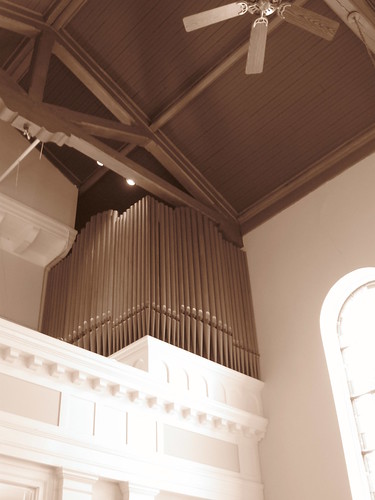
The organist provided illustration for the sermon.
"Think of a C-chord. The C, E, and G notes are all distinct notes, but joined together as one chord the sound is richer and more dynamic than had the notes been played individually. The chords are all equally important in producing the rich sound, and the sound is lacking and thin if one of the notes is left out." -- All About Trinity Sunday [click to read].
The pipe organ adds richness to worship, but this Trinity Sunday, attending the Christening of my little granddaughter, we were treated to the use of its music as a sermon illustration. The doctrine of the Trinity has long troubled many Christians, and the priest explained that it is really the answer to the question: "How does G-d love us?" He explained that G-d's greatness is felt in contact with the distinct parts of that nature. G-d embraces mankind through Jesus, the Redeemer and the Spirit who indwells us.
The organist played a C-chord, then the individual notes, helping the listeners to wrap their minds around a mystery through illustration.
"Essentially the Trinity is the belief that G-d is one in essence (Greek ousia), but distinct in person (Greek hypostasis). Don't let the word "person" fool you. The Greek word for person means "that which stands on its own," or "individual reality," and does not mean the persons of the Trinity are three human persons. Therefore we believe that the Father, the Son, and the Holy Spirit are somehow distinct from one another (not divided though), yet completely united in will and essence. How can this be? Well, think of the sight of two eyes. The eyes are distinct, yet one and undivided in their sight." -- All About Trinity Sunday [click to read].




No comments:
Post a Comment